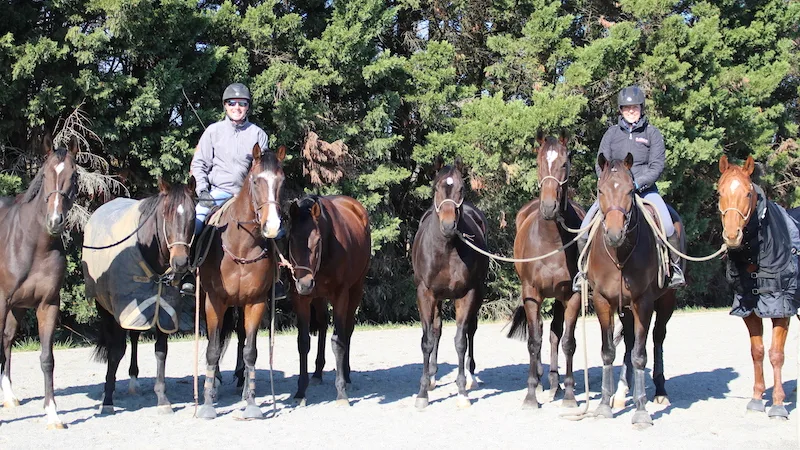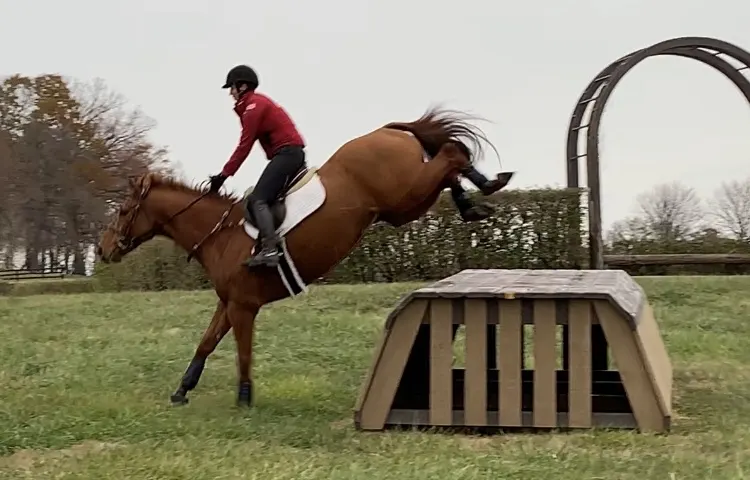For the past few years, I’ve had the pleasure of writing about the off-track Thoroughbred for a variety of publications. I’ve run the gamut of topics, from aftercare to first rides to final rides, competitions, sales, training, and even dating (deep down it makes sense). Horses being horses, there is never an end to discussion even within a single subject, because no one knows all there is to know yet, least of all anyone under the age of 70.
And now, I have free rein (hehe) with the Chronicle to expound on our process for transitioning the on-track Thoroughbred to off, and the hows and the whys. The roots, if you will.
My husband, Tom Mansmann, and I run Pacific Farms Inc., in Middleburg, Virginia, where we train horses and riders of all kinds, but we have an affinity for the Thoroughbred. Our early background is steeped in the eventing world, and as many old school, long-format riders did, we spent many years exercising race horses (flat and steeplechase). We have a true appreciation for these horses, their people and the sport of racing.

These are just some of the OTTBs Tom and I currently have in training. (There were five more back at the barn!) Allison Howell Photo
What we do is not new, but it is intentional. The OTTB is a trained animal, so yes, you can hop on and ride them. The thing is, they are trained to race, so if you’re not looking to do that, then setting them up for success with further education would behoove you both. We aren’t really re- training them; we are doing what we call re-careering them. They had one job; they are learning another. They will carry over knowledge and experience from their former job, but it still takes time to develop a new language, new muscles, new posture and comfort with a new routine.
You see, so much is new to these guys (and gals) coming off the track. Racing barns have hustle and bustle, and then quiet. Boarding barns have more quiet, and then hustle and bustle. No one is riding the race horse during dinner (aside from nighttime racing), and your average adult amateur isn’t bursting to ride at 5 a.m. (I know you exist, but you’re not average.)
ADVERTISEMENT
The food is different, the care is different, the turnout is different, the people are different, the saddles, bridles, boots, blankets, schedule, expectations, all so different. We like to be understanding of that and work to make the process as seamless as we can.

We use ponying a lot. Racehorses are very used to the pony horse, and we go over miles of countryside, ditches, coops and creeks, in addition to operating gates, hopping over cavaletti, standing around, and even doing the occasional puddle jumper course at a local horse show. (Pictured: Tom and Playdo ponying OTTB Aviator Parks.) Allison Howell Photo
And so we take it back a step, and another, and another. And sometimes, we think we’ve taken it back and realize there’s another step we didn’t consider, so we step again. We may back up so far that we get off, untack and back-step right on back to the barn. We never think of this as hurting some timeline. It takes the time it takes, and a good reinback always sets you up for a better transition anyway.
We work every day to find the root of ideal behavior in the horse. It’s pretty easy to find the root of undesirable behavior, but the desired behavior? That’s oddly not always the focus in peoples’ minds.
And so why? Why does a horse stand at the mounting block? Why does he ground tie? Why does she tie to a trailer, and then why does she get on that trailer? Why does my horse canter when I ask, on the lead I want? Why turn, halt, reinback, leg yield, shoulder-in, half-pass? Why on earth does he jump whatever I point him at? Why?

I mean, when you think about it, why? All I did was ask… Horses are amazing. (Pictured: OTTB Buff Dude.) Crystal Sorrenti Photo
The simplest answer is honest communication. British show jumper and eventer John Smart told me once (slightly paraphrased) that, “A horse does not have to enjoy what we are asking them to do (i.e. jumping), but if they do, then we have explained it correctly.” I love that.
ADVERTISEMENT
But that begs the question: how? Now we get a little murkier, because if there was a clear cut answer, you wouldn’t be reading this right now, there wouldn’t be a variety of books on the subject and also I wouldn’t have a job.
The “how” is body language, consistency, confidence, assertiveness, desire, respect, experience and listening. Education, trial and error, love for the horse but also for people, joy in the process, finding peace, exercising patience, being kind and good, ultimate perseverance, the ability to be gentle, and utilizing self-control. See? It’s super easy.
Well, riding is a luxury activity, but not a leisure one. But boy, do we love it.
We have a saying in our barn that there are a lot of steps from the stall to the mounting block. I hope you’ll join in and follow along as we continue to trace them back and forward again. We focus on what we can do to be better for the horse. The better the foundation the rider has, the better educated the rider is, the better we can translate that to the horse to provide them a solid foundation, to enable them to have a safe and productive life and lasting partnerships.
Clare and Tom Mansmann operate Pacific Farms, Inc. in Middleburg, Virginia, where they ride and train a variety of horses but specialize in off-track Thoroughbreds.















